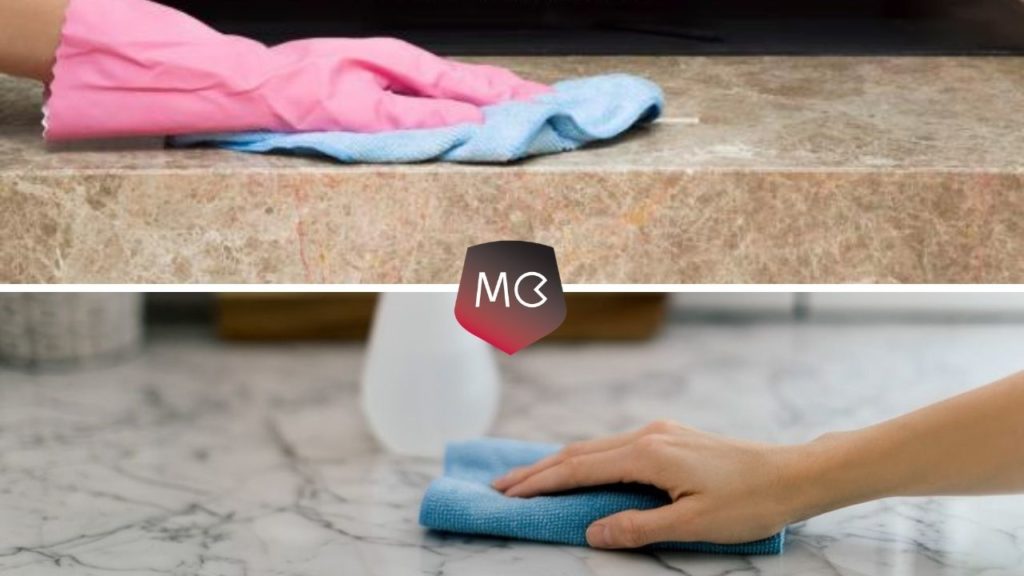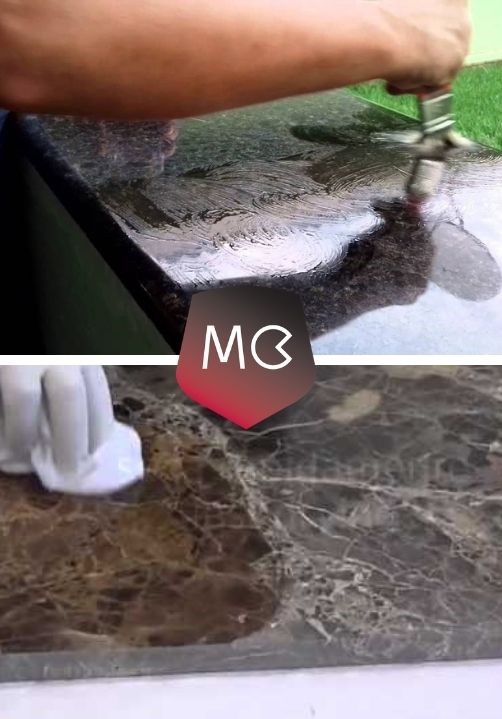Get to know marble!
What is marble?
It is a metamorphic rock that originates from limestone. It has been exposed to high temperatures and pressure and is most often located in mountainous regions with volcanic activity. Marble comes in a variety of colors, textures and veins. From white, cream, black, brown, pink, green, gray, blue, etc.

How can you tell marble from granite? DO THE TEST: scratch the stone. If it’s scratched, it’s marble!
History:
Marble has been used since ancient times and was considered a symbol of grandeur, wealth and social status. The Egyptian people were certainly the first to quarry marble. Later, temples and noble buildings were built in marble in Ancient Greece, but it was in Ancient Rome that marble was most exploited and used. Meanwhile, in the Middle Ages, marble was used in the construction of churches and royal houses. It is certainly still used today in the construction of buildings.
Some examples of the use of marble:
- Taj Mahal – Indian monument.
- David, Sculpture by Micheangelo.
- “Virgin Mary” – (Marble Veil) – Sculpture by Giovanni Strazza.

Uses and Applications
It is a material used in construction, interior decoration, design and sculpture.
You can apply it inside your home:
- Bathrooms: both flooring and countertops made entirely of marble, shower trays and bathtubs.
- Kitchens: in flooring and worktops. You can also have a fully marble sink.
- Living room: in wall coverings, floors, coffee or side tables, mirror or furniture frames, trays, sculptures, vases, furniture tops and fireplaces.
- Dining room: dining tables, side tables, trays, wall and floor coverings.

Marble is a material that “fits” into any style of home, from the most rustic to the most modern. Marble can be used in small decorative details as well as large elements such as flooring or walls.
Advantages:
- Marble is a durable, porous and crack-resistant material.
- Each piece is unique and different because it is a natural material.
- It comes in a wide variety of colors and finishes.
Disadvantages:
- It requires a lot of maintenance and cleaning.
- The stone can stain if care is not taken.
- It scratches easily as it is a porous material.
Cleaning and maintenance tips:
- To clean marble, use only neutral soap, a damp cloth or soft mop and lukewarm water.
- Avoid spilling products that stain the stone, such as: fats/oils, wine/sparkling wine, coffee, tomato sauce, soft drinks, dyes and rust.
- Do not use abrasive cleaning products, bleach or acids.
- Avoid placing hot pans and lids or very cold containers directly on the stone.
- If your stone stains, you should contact the manufacturer so that they can recommend a suitable product.

Finishes:
Marble surface finishes can have different functions. On the one hand, they can be purely aesthetic, depending on personal preference and taste. You can opt for a marble with a shine (polished), matt (honed), or more rustic like brushed. On the other hand, there are finishes that give non-slip surfaces. For functional reasons, they can also be chosen or even alternated.
Treatments and waterproofing:
Waterproofing products can be applied to marble to prevent the stone from staining or absorbing grease. Waterproofing makes cleaning and removal easier. When placing an order, ask for a quote for waterproofing/treating marble stone.

Sources:
http://www.reismarmores.com.br/produtos/curiosidades-dicas-e-cuidados
https://decortips.com/pt/casas/usos-do-marmore-na-decoracao/
https://www.blogdaarquitetura.com/extracao-marmore-arquitetura-interiores/
https://construirnolitoral.com.br/blog/marmore-na-decoracao-tudo-o-que-voce-precisa-saber/


